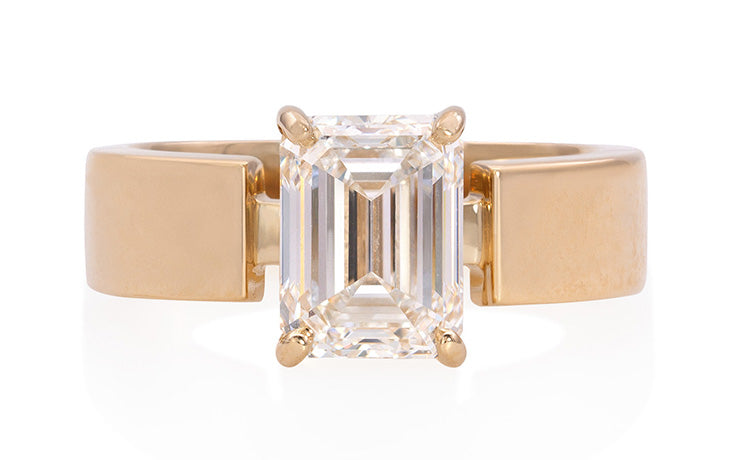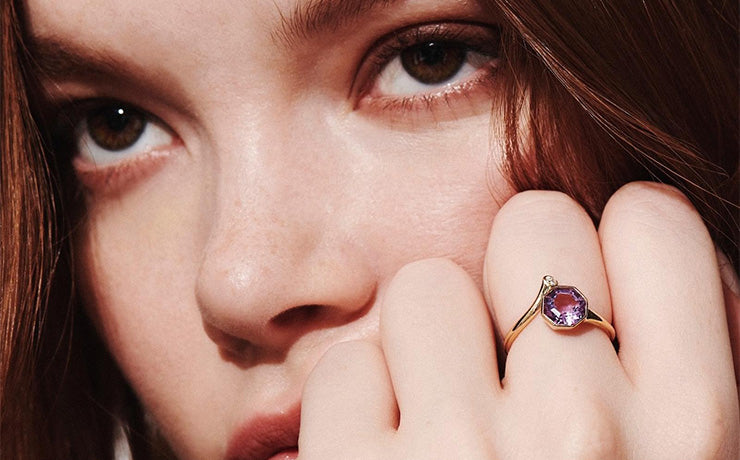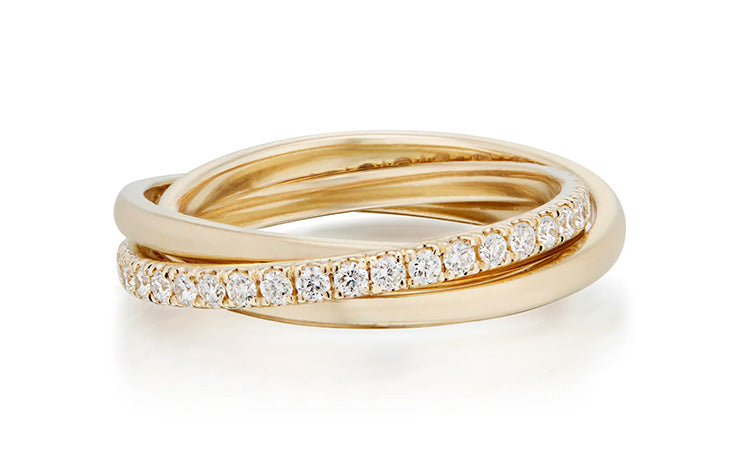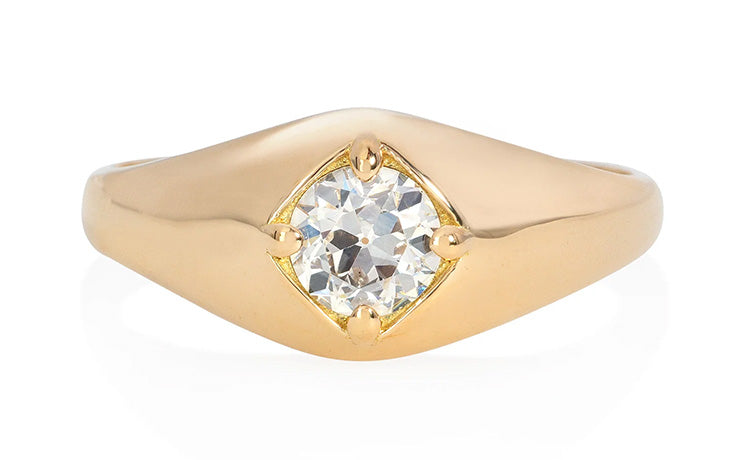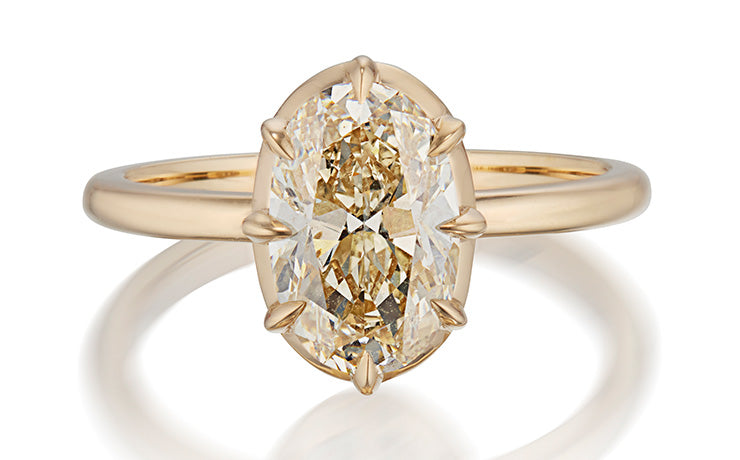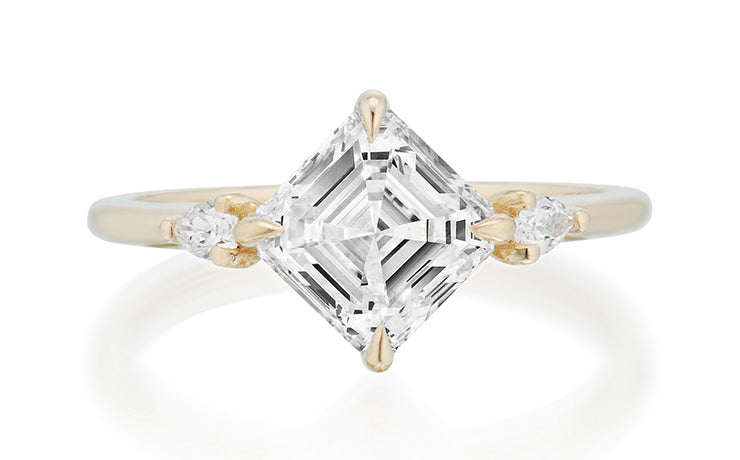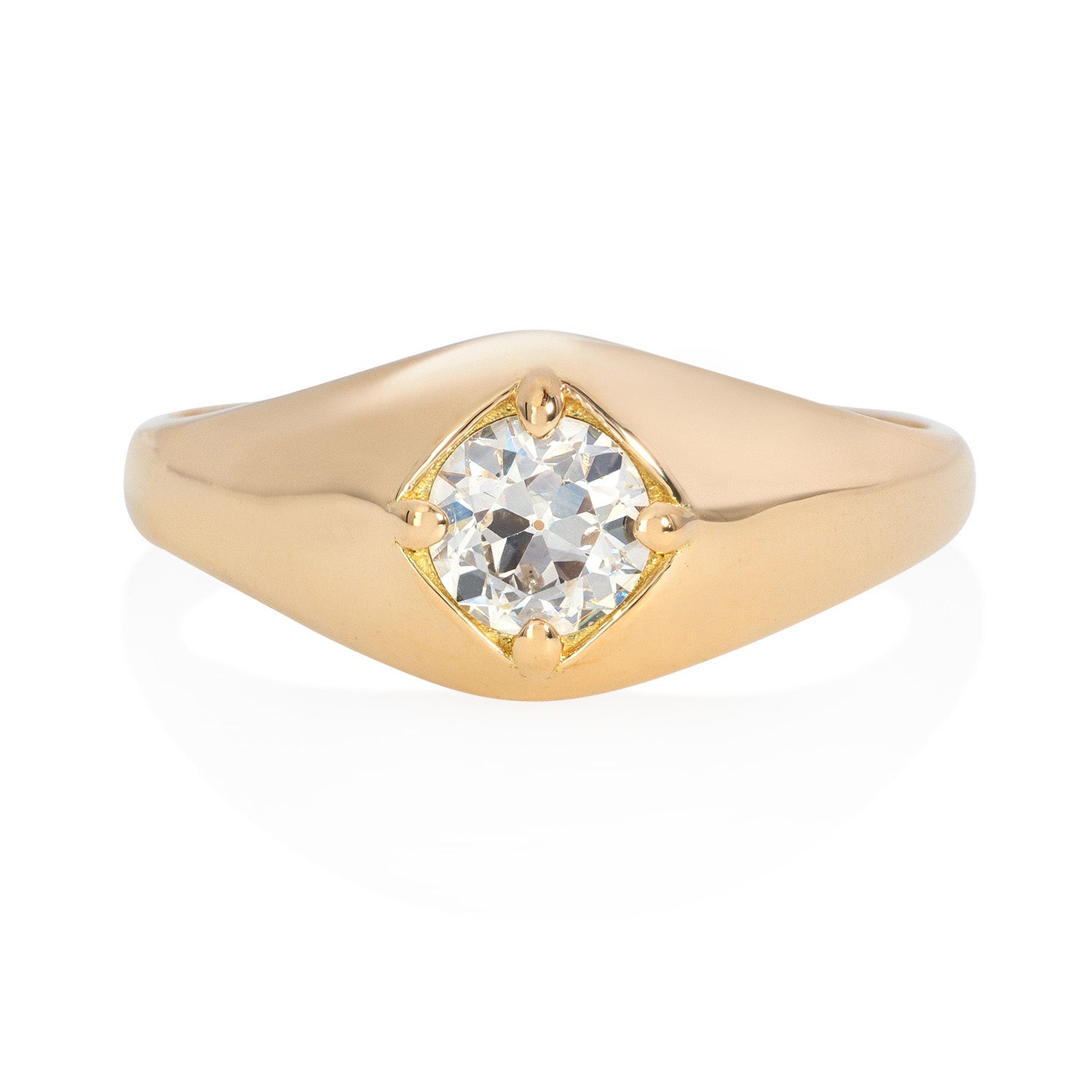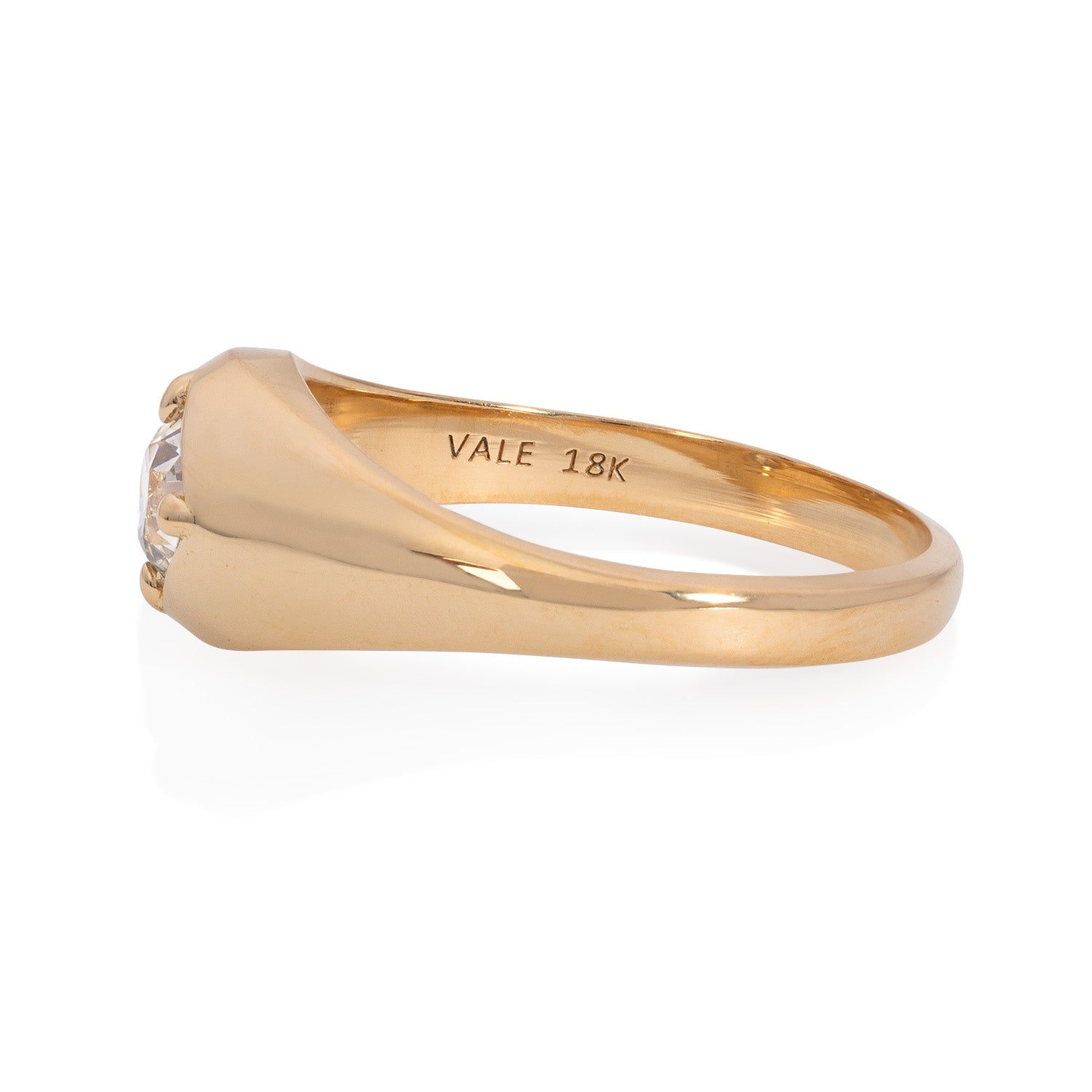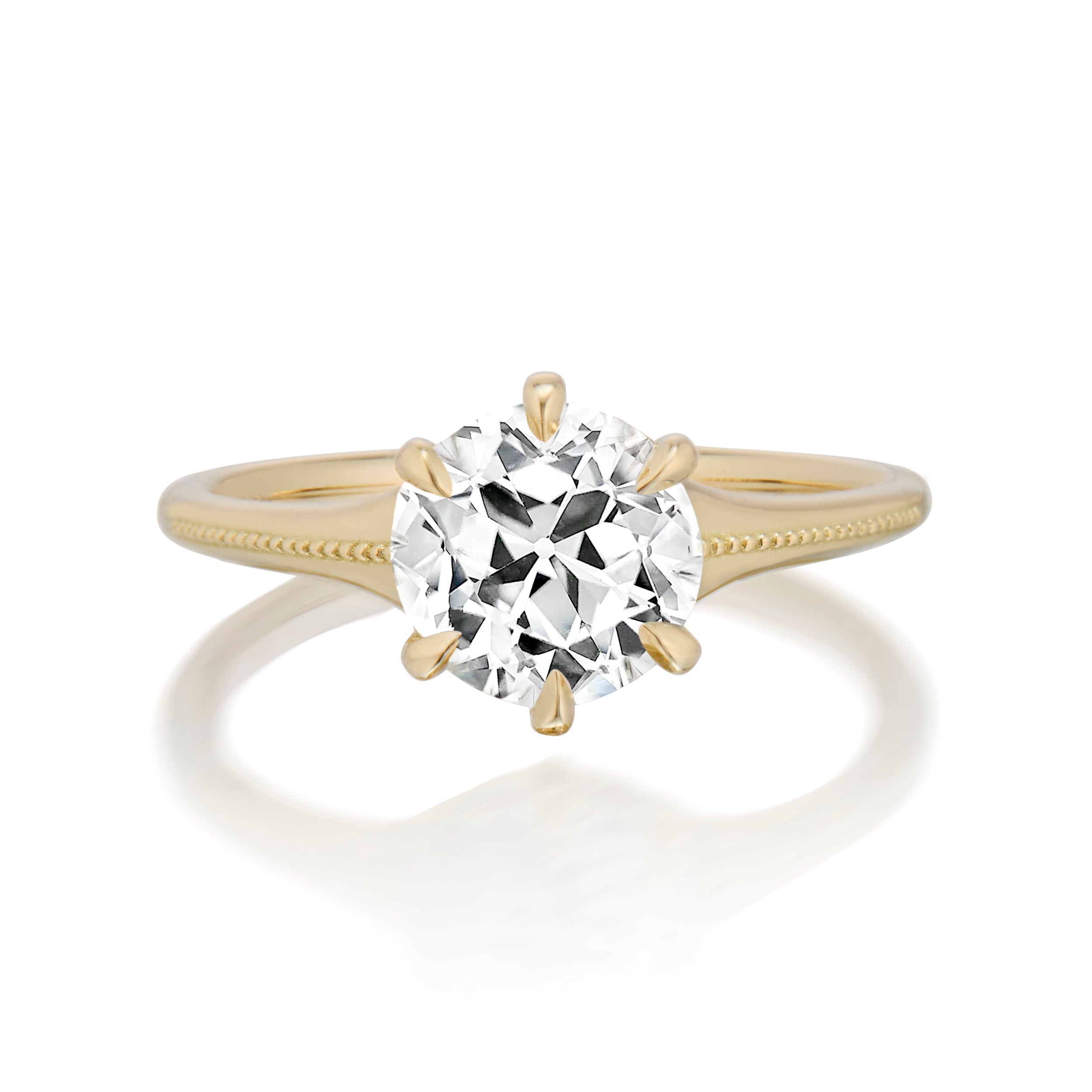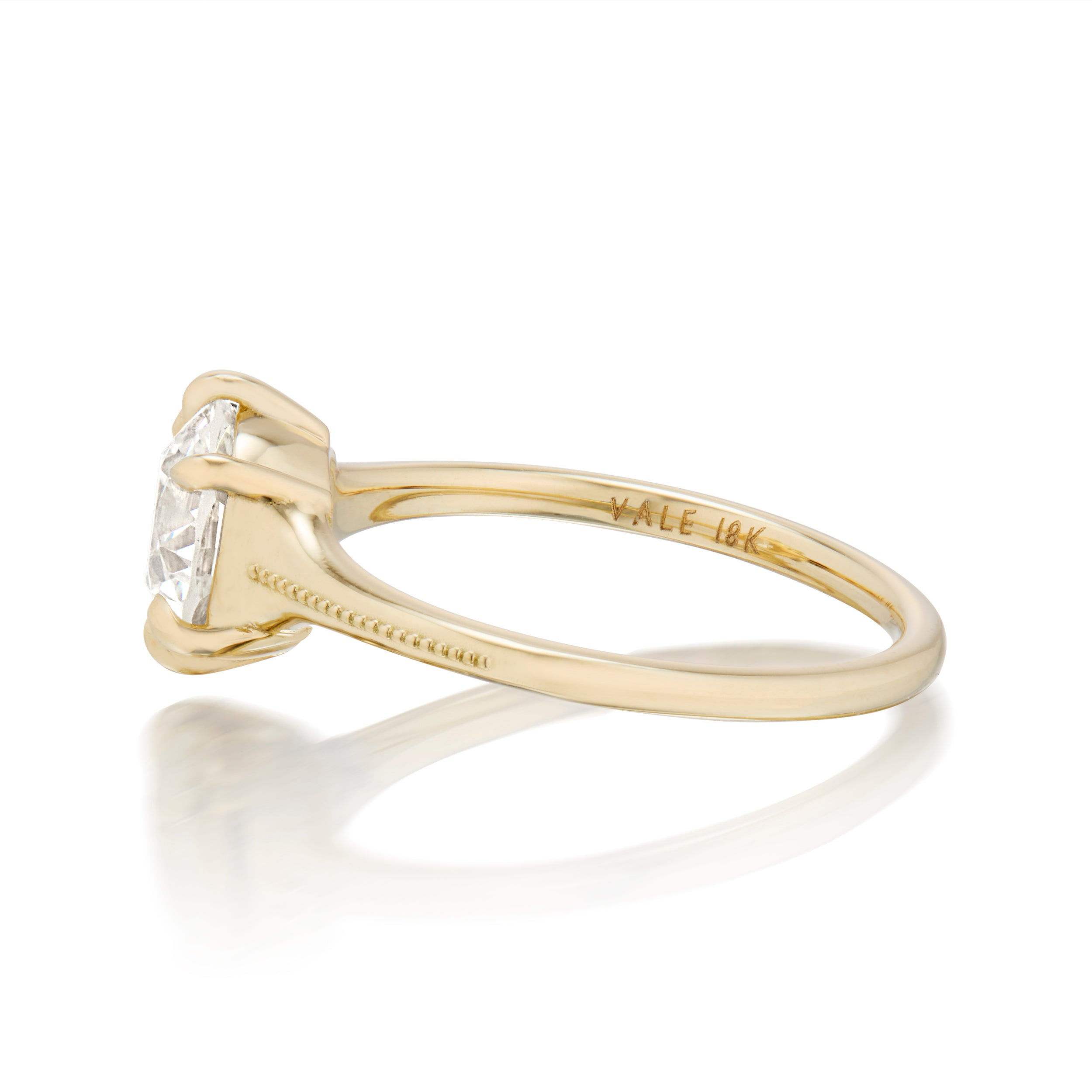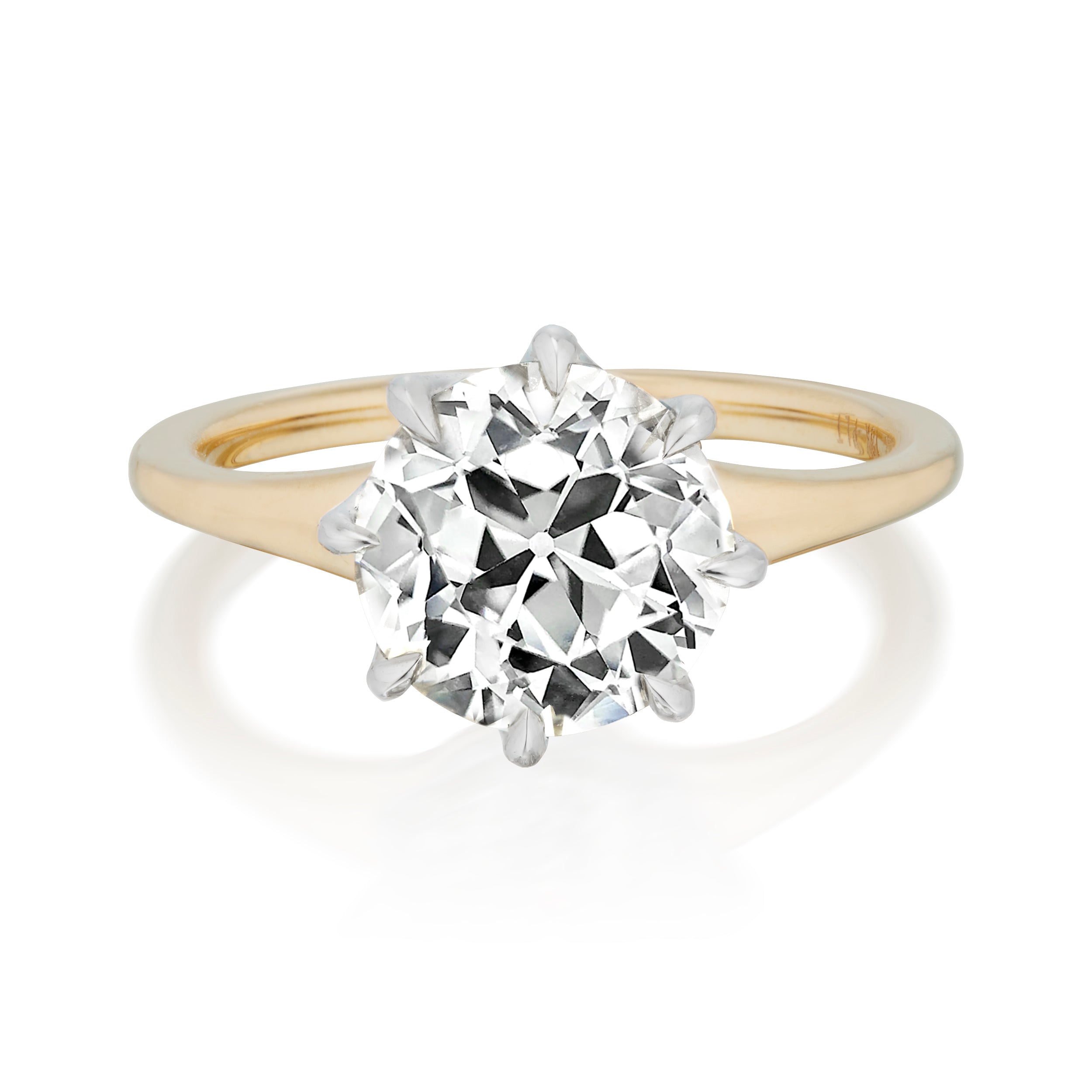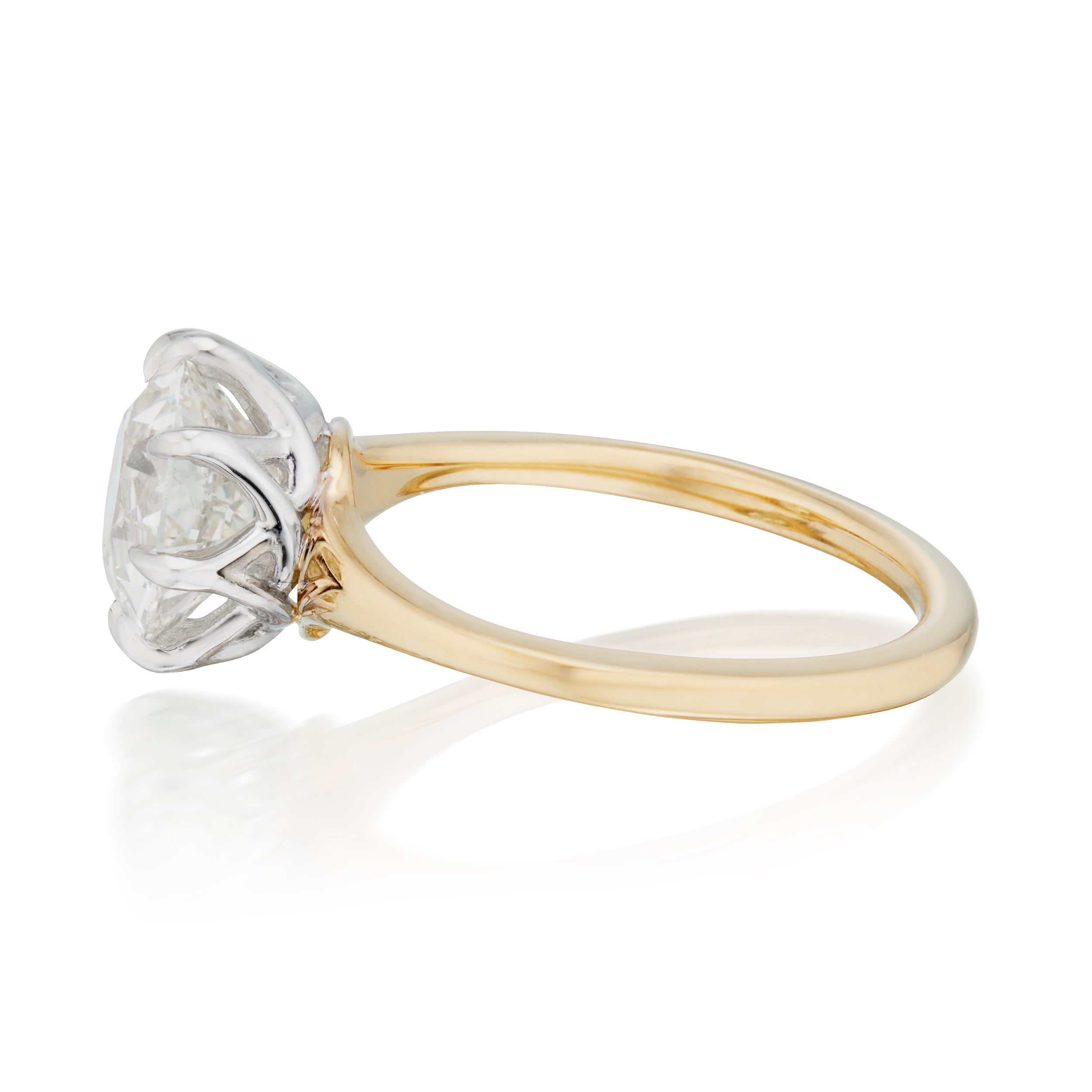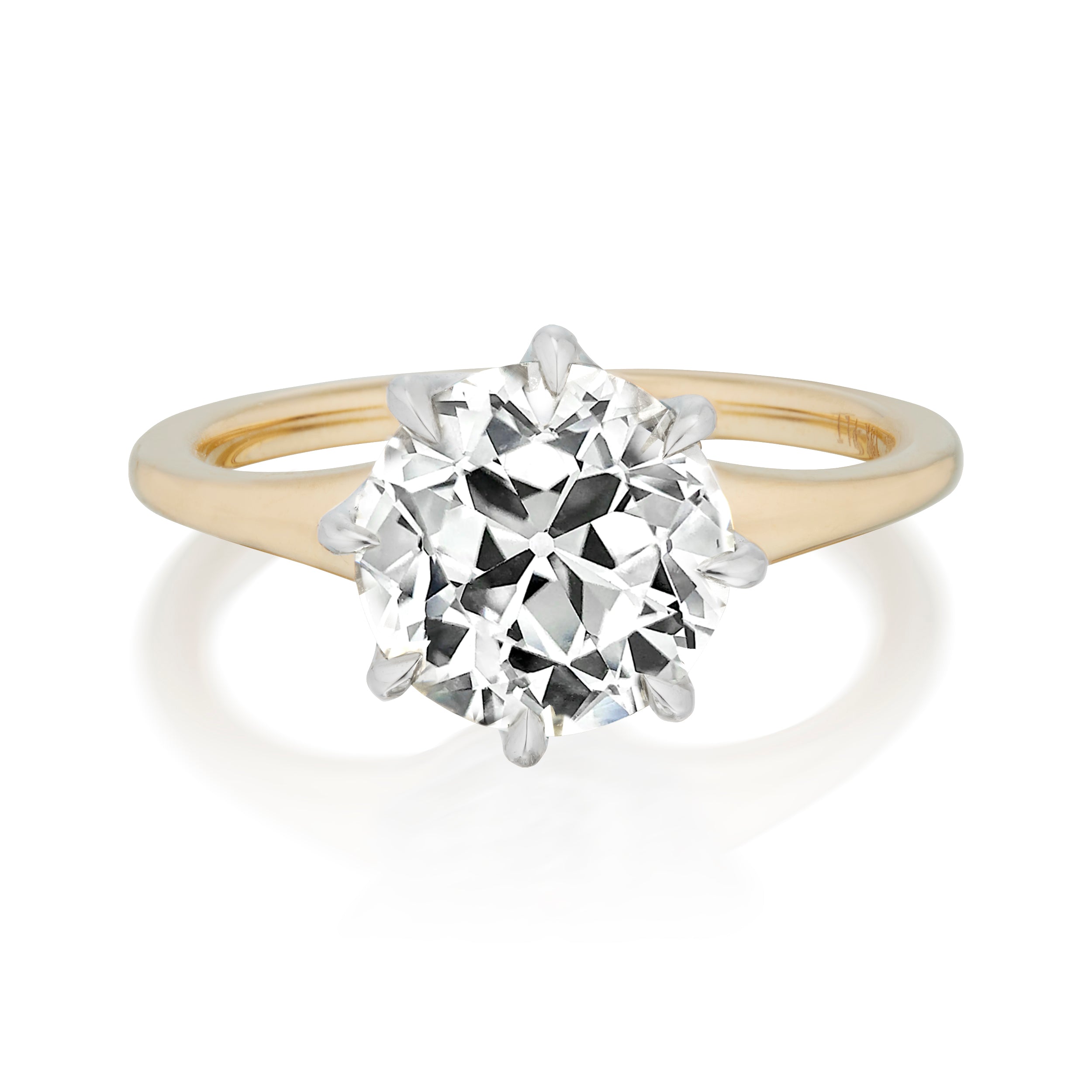
Old European Cut
The Old European cut is distinguished by its round shape and a set of defining features that reflect the craftsmanship of a bygone era. These diamonds typically showcase smaller tables—the flat, topmost facet—along with higher, more prominent crowns, larger open culets, and steeper overall proportions.
One of the most notable characteristics is their broad, chunkier facets, which give them a unique ability to capture and reflect light. Unlike the sharp, scintillating sparkle of the modern brilliant cut, which relies on fine, splinter-like facets for maximum brilliance, the Old European cut produces a softer, more romantic glow—often described as a candlelit shimmer. This gentle play of light emphasizes depth and fire over sheer brightness, making each stone feel rich with character and vintage charm.
Sort by
4 products
Filters

Old European Cut | Shop the Collection
At Vale, we have a deep love for Old Mine and Old European cut diamonds. These true antique cuts are not only visually stunning, but also embody a sense of sustainability and ethical craftsmanship. As diamonds that have been cherished for generations, they carry no new environmental impact.
Over time, many antique diamonds were recut into modern brilliants to meet market trends, which has made these original cuts increasingly rare, especially those with high color and clarity. Today, some manufacturers are reviving these styles, even cutting new stones in the old ways—but their charm is unmistakably different.
Choosing between a modern brilliant and an antique cut is ultimately a matter of personal taste. For those seeking a truly unique and timeless engagement ring, we invite you to visit our showroom and experience the distinctive beauty of these rare diamonds in person. Their character and sparkle are best appreciated up close.
What is an Old European Cut?
This type of antique cut, often abbreviated to OEC or Old Euro, is a precursor to the modern brilliant cut that we see everywhere today.
Why are they called Old European Cut?
Old European cut diamonds are called "Old European" because they represent a specific historical style of diamond cutting that originated in Europe (especially in the diamond cutting centers at that time including Antwerp and Amsterdam) and was popular from the early 1800s through the early 1900s, especially during the Victorian, Edwardian, and Art Nouveau periods.
The name distinguishes this antique cut from later styles, especially the modern round brilliant cut, and intermediary cut styles such as the Transitional orCircular Brilliant Cuts, which began to dominate in the early 20th century after advancements in cutting technology and light return.
Are Old European Cuts priced different than Modern Brilliant Cuts?
The Old European cut is distinguished by its round shape and a set of defining features that reflect the craftsmanship of a bygone era. These diamonds typically showcase smaller tables—the flat, topmost facet—along with higher, more prominent crowns, larger open culets, and steeper overall proportions. One of the most notable characteristics is their broad, chunkier facets, which give them a unique ability to capture and reflect light.
Unlike the sharp, scintillating sparkle of the modern brilliant cut, which relies on fine, splinter-like facets for maximum brilliance, the Old European cut produces a softer, more romantic glow—often described as a candlelit shimmer. This gentle play of light emphasizes depth and fire over sheer brightness, making each stone feel rich with character and vintage charm.
Old European diamonds, typically crafted in the late 1800s, reflect a turning point in gem cutting—made possible by the advent of the steam-powered lathe. This innovation used in other types of precision cutting, when applied to gems, enabled diamond cutters to shape rounder, more symmetrical, and finer girdles than ever before.
Are Old European Cut Diamonds graded by GIA differently?
By GIA standards, Old Euros and Old Mines for that matter typically receive Fair or Poor cut grades because they facets are less precise. We find that laboratories are harsher when grading for symmetry and polish on these older stones because they do not follow today’s more precise faceting.
However, GIA does recognize the difficulty in measuring these older stones against today’s modern brilliant so antique cuts like Old European Cuts and Old Mines do not receive a cut grade.
While most graders and diamond dealers recognize that the standards for cutting centuries ago, most cutters were attempting to keep as much carat weight as possible, so the proportions varied greatly.
Diamonds cut during this era conformed less to a strict standard than they do today where most diamonds are cut with the assistance of laser and more advanced machinery.
In retaining as much of the carat weight of the original rough, the Old Mine and Old European cuts rarely meet the cut grade standards of today’s modern cuts. These stones were cut by artisans predating today’s conformity standards which typically follow precise mathematical proportions.
Be the First to Know
Subscribe to get updates on upcoming events, latest collections and special offers.

